
|
Presenters and Presentation
Abstracts
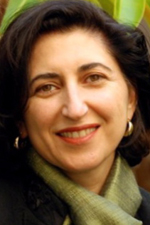 |
Fariba Bogzaran, Ph.D. (USA)
is a faculty member and founding director of the Dream
Studies Program at John F. Kennedy University in
Berkeley, California. She scientifically
researched lucid dreaming, working with Stephen LaBerge
at the Stanford Sleep Laboratory in the 1980s, and wrote
both her MA (1989) and Ph.D.(1995) on this topic.
She
was a member of the Steering Committee of the Lucidity
Association and has been teaching lucid dreaming
in academia since 1984 and is the co-author of
Extraordinary Dreams (SUNY, 2002).
Hyperspace Lucidity and a Holistic Approach to Lucid
Dream Explorations
Hyperspace Lucidity is a subset of experience in lucid
dreams that is often categorized as impactful, big
dreams, and ineffable. These experiences can be
exhilarating, transformative, and at times unsettling.
Hyperspace Lucidity can happen spontaneously or by way
of incubation.
This presentation discusses three areas: 1) the
phenomenology of the experience of Hyperspace Lucidity
2) the problems of incubating these states, including
incubation of lucid dreaming, itself out of context and
3) offers a holistic view in approaching the practice of
lucid dreaming.
|
| |
|
 |
Robert Bosnak, PsyA (the Netherlands/USA)
is a Jungian psychoanalyst, 1997 graduate of the C.G.
Jung Institute in Zurich, who has been in private
practice in Cambridge, MA; Sydney, Australia; and
currently in Santa Barbara and Los Angeles. His
various books have been translated into over a dozen
languages. He was visiting professor of clinical
psychology at Kyoto University, teaches and trains
therapists worldwide, and is Past President of IASD.
Together with Stephen Aizenstat, he is founder of the
Santa Barbara Healing Sanctuary, a residential
body-focused learning facility enhancing health and
triggering the endogenous self-healing response.
The SBH Sanctuary works in tandem with conventional
medical treatment. The practice of dream
incubation is central to Sanctuary medicine.
Giving Dreams Sanctuary (paper)
The September 20, 2011 opening of the Santa Barbara
Healing Sanctuary marks the beginning of a new era in
21st century medicine in which dreams will once again be
central to medical treatment. Western medicine was
first codified by Hippocrates, a member of the Asklepiad
family. This family of healers traced their
ancestry 18 generations back to the legendary divine
healer Asklepios whose central practice was to heal by
way of dreaming. Of the many forms of Western
medicine practiced in Antiquity, healing revelation
through dreaming was the only medicine ubiquitous in the
entire Greek world and Roman empire for over 1,000
years. Then Christianity took over, followed by
Enlightenment and rationalism. We have now entered
the post-rational era, a time when rational
consciousness, based on the mathematics of objective
ratios, co-exists on an equal basis with the qualitative
understanding of the world which presupposes
subjectivity as the primary access to knowledge.
It is logical that in the post-rational era dreams
reemerge as a critically important source of information
and a dramatic purveyor of healing intelligence for
people suffering physical illness and for those who wish
to prevent it.
|
| |
|
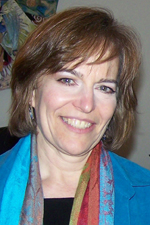 |
Laurel Clark, President, School of Metaphysics (USA)
Laurel Clark, has been teaching metaphysics, including
dreams and intuitive development since 1979. A
teacher, interfaith minister, and psi counselor, Laurel
draws upon dreams and meditation for personal guidance
and to aid students and clients. This
presentations is excerpted from
The Encyclopedia of Sleep and Dreams (edited
by D. Barrett and P. Macnamara) and Laurel's upcoming
book,
Intuitive Dreaming.
The Law of Attraction and Other Secrets to Incubating
Dreams (paper)
Dream incubation is an ancient practice known in modern
times for its use in healing. Incubation means
providing the proper conditions for something to grow;
for example, incubating an egg so that a chick can
hatch. In the creative process, incubation refers
to a time of subconscious reflection for an idea to come
forth with knowledge beyond the scope of the conscious
mind.
Properly incubated dreams produce answers and insights;
provide guidance; and, like the ancient Asclepian dream
temples, may result in healing dreams and messages.
The paper presents a metaphysical perspective of
visualization principles and "universal law" that
explains incubation as an interactive communication
between conscious and subconscious mind. Laurel
gives specific steps for incubating dreams, examples
from her own experience, and methods for PDC
participants to experiment with and discuss.
|
| |
|
 |
Beverly D'Urso, Ph.D. (USA)
Dr. Beverly (Kedzierski Heart) D'Urso, an
"extraordinary" lucid dreamer all her life, has used her
practical teaching called
Lucid Dreaming/Lucid Living to give
workshops and present at conferences for decades.
She completed her Masters, involving Cognitive
Psychology, and her Ph.D. focusing on Artificial
Intelligence, at Stanford University, where she also did
lucid dreaming research with Dr. Stephen LaBerge.
Dr. D'Urso has over fifty publications and has done very
well in many IASD/PDC contests. She currently
follows the "Diamond Approach" spiritual path of A.H.
Almaas.
www.durso.org/beverly and
www.wedreamnow.info
Could You Be Dreaming Now? (workshop)
What if we actually "dream" while in the "waking" state?
Instead of labeling our waking state as distinct from
our dreaming state, what if we look at everything we
experience as "dreaming" and decide that our experiences
differ only in
our level of lucidity? We could then
continuously use lucidity techniques, and what
we learned from sleep-state lucid dreaming to enhance
our life.
In this session, we will discuss such lucidity
techniques and lessons, and learn how to apply them in
any state. We will also inquire into whether we
know or just
believe we are or are not
dreaming at any instant, so that we do not create
disaster, nor miss out on experiencing the exhilarating
creative and potent "magic" that lucid dreaming can
bring to every moment. By investigating our
beliefs, assumptions, reactions, and judgments, we can
keep them from restricting us. When we don't
resist our current internal state, find out where it
comes from, and understand it, we can openly explore our
questions and patterns, not from a constricted place of
fear and limitation, but from an expanded place of
clarity and truth.
|
| |
|
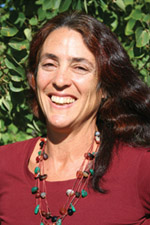 |
Joy Fatooh (USA)
has had a few dreams, one or two thoughts, a couple of
ideas, and several musings. She might have stories
to tell. Mostly, she'll listen.
Retrospectives On Lucid Dreaming: Opening the Borders of
Consciousness (discussion group)
Do we each have a little Border Patrol enforcing
immigration laws between Awake and Asleep, checking
whether Awareness is carrying a passport called
"Lucidity"?
Or is consciousness a vast, multidimensional continuum
in which we move freely, naming and defining the states
we visit only so we can describe them to our fellow
travelers?
Here is a discussion with no border patrol. As
this conference draws to a close, come share your
thoughts, stories, ideas and musings about what lucidity means
to you...and where you can go with it.
|
| |
|
 |
Jayne Gackenbach, Ph.D. (Canada) from
Grant MacEwan University, is one of a long list of past
Presidents of IASD. Dreams of video game players
is now her research focus. She has two books
forthcoming on gaming, including one on consciousness
and video game play. These topics are covered in
her online radio talk show at
www.webtalkradio.net
A Brief Overview of Lucid Dreaming Psychological
Research (paper)
This essay appears in a Russian book summarizing my
work, thus this is its first appearance in English.
It is a research summary only, without examination of
first person accounts. A brief summary of research
into individual differences associated with lucid
dreaming is highlighted since my early work. I
also briefly summarize some of the induction research
and applications work. Research into lucid
dreaming content and spiritual implications are also
quickly highlighted.
|
| |
|
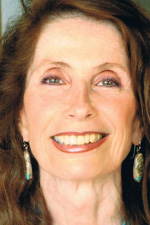 |
Judy B. Gardiner (USA)
Following a corporate career, Judy B. Gardiner set out
to explore the bewildering images in her dreams.
Extensive research revealed explanations of science far
beyond her waking knowledge. In collaboration with
the late Montague Ullman, they discovered that the
bidirectional nature of dreaming simultaneously points
inward to our personal concerns and outward to our
planet. This can be described as Cosmic Dreaming,
in that it concerns us as members of a unified species.
Dreaming Beyond Ourselves (paper)
Judy's presentation is excerpted from her recently
published novel
Lavender~An Entwined Adventure in Science and Spirit.
Inspired by a true story,
Lavender is a unique study of the Dream as
an unfolding process that reveals the transformational
features of one's destiny. The book's purpose is
to dispatch a lifesaving message to humankind, while
illustrating diverse functions of the Cosmic Dream:
* develops human potential
* invokes spiritual and cosmic connection; and
* alerts us to potential danger to the species
The presentation includes excerpts of an Introduction by
Montague Ullman, and a chapter from the book entitled
"Looking Through the Kaleidoscope." Following the
quest of Penelope, an unschooled, unscientific, and
unexpected vehicle for higher truths,
Lavender engages the reader in decoding
dream-encrypted riddles and clues to a monolithic
puzzle.
In this chapter, Penelope is frustrated and concerned
that her friends won't be able to follow the circularity
of her mysterious dream mission and wondering if she'll
ever fulfill it. One of her ancient mentors comes
to her rescue and teaches her a process with which to
unravel a cosmic dream theme.
|
| |
|
 |
Janet Garrett (UK/Spain) has
been interested in all aspects of dreams and dreaming
for more than 20 years. She attended her first
PsiberDreaming Conference in 2004, and has worked
backstage at the PDC since 2008. Janet is also
part of the team that produces IASD's
Dream News. In June 2011, she
completed an MSc in Consciousness and Transpersonal
Psychology at Liverpool John Moores University (UK), for
which her master's thesis was on the topic of mutual
dreaming. Janet lives in Spain, where she leads
study groups on dreams and psychology for other
English-speaking ex-pats.
The Role of Lucid Dreaming in a Group Dreaming
Experiment (paper)
For my recently completed master's thesis, I attempted
to update Jean Campbell's group dreaming research for an
Internet experiment. In my experiment, a group of
eight dreamers, plus myself as facilitator, dreamed
together in four dream sessions conducted over a period
of eight weeks, with a different focus for each cycle.
In one session the dream focus was a target word
transmission from a lucid dream; this presentation
describes the results from this experimental cycle and
suggests a role for lucid dreaming in psi dream
research.
|
| |
|
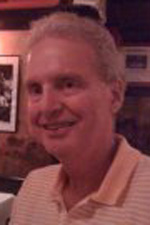 |
Lou Hagood, Ph.D. (USA)
is a licensed psychoanalyst working with dreams
one-on-one and in dream sharing groups for fifteen
years. He trained at the National Psychological
Association for Psychoanalysts in New York.
Lou has led dreamsharing groups at the annual IASD
conference and at the Institute for Noetic Sciences in
New York, as well as presenting at several IASD
conferences.
Results of the Dream Incubation Question: What is My
Lucidity? (paper)
Dream incubation is one of my lucidity practices.
I used it to explore lucidity by asking what lucidity
was to me, and got a vivid image in a dream. Later
I asked a follow-up question and got further
clarification--all of which I will share and discuss.
|
| |
|
 |
Tony Hawkins
My earliest memories are of dreams suggestive of pre- or
other-types-of existence. Dreams informed my adult
writing of epic novels and have now taken over from the
writing of fiction as my main interest. I am
trying to capture this ever-developing human story in a
book.
The Worm
I have become fascinated by the
multitasking/multifaceted nature of dream. It has
made me respect much more the "small" dream, and cast
doubt that "great" dreams are really any bigger.
The Worm is perhaps the most surprising dream I've ever
recorded, seemingly so minor and unpleasant that I
instantly wanted to forget it, yet leading to a
spiritual illumination which took place right inside all
my resistance. Given that you are about to read
it, I doubt that the process has ended.
|
| |
|
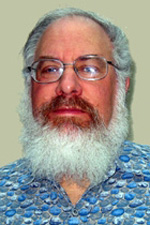 |
Curtiss Hoffman, Ph.D. (USA)
is a professor of Anthropology at Bridgewater State
University. He teaches a wide diversity of courses
in archaeology and anthropology, including a writing
intensive, "Symbol and Society in J.R.R. Tolkien's
Middle Earth." He is Program Chair for the 2012
IASD Conference, and is a member of the IASD Board.
Wings Over
Numenor: Lucid Dreaming in the Writings of
J.R.R. Tolkien (paper)
It is well known that precognitive dreams play an
important part in Tolkien's epic
The Lord of the Rings. Frodo, in
particular, is the recipient of dreams which move the
plot along and which subsequently turn out to be "true."
It is also fairly well known that Tolkien assigned a
recurrent dream of his own past of a past cataclysm to
the character of Faramir, after which he ceased to be
plagued by the dream. What is less well known is
that Tolkien apparently quite independently of Van Eeden
and others at the time, explored the realms of lucid
dreaming and expressed this in his writing. The
evidence for this is mostly contained within a curious
unfinished manuscript, "The Notion Club Papers."
Written as if from the vantage point of our day looking
backwards to events of the late 20th century among a
group of Oxford dons, These are thinly veiled
members of his own literary society at Oxford, the
Inklings.
In this presentation, I will explore the nature of
Tolkien's experiments with lucid dreams, which may have
some important ramifications for lucid dream adventurers
today.
|
| |
|
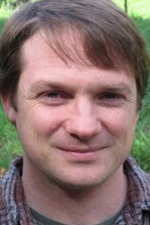 |
Ryan Hurd, M.A. (USA)
is a dream educator living in Philadelphia, PA. He
is founder of DreamStudies.org (www.dreamstudies.org)
and the author of
Sleep Paralysis: a guide to hypnagogic visions and
visitors of the night. Ryan is also a
member of the IASD Board.
Lucid Immersion: a holistic method for increasing
lucidity in dreams and waking life (paper)
Lucid Immersion
is a method for increasing lucidity in dreams and waking
life. Just like learning a language, this method
helps you create a saturated environment for going lucid
in a way that simultaneously targets your mind, body and
soul. As a meta-method,
Lucid Immersion is drawn from the latest
lucid dreaming research as well as the wisdom of
historic dreaming lore. This presentation helps
you build a container for safe and effective lucid
immersion within the constraints of everyday life.
|
| |
|
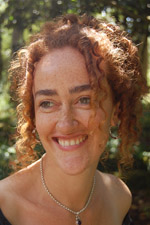 |
Clare Johnson, Ph.D. (UK/Germany)
is a novelist and artist whose
doctoral thesis examined the connection between lucid
dreaming and creativity. Throughout the writing of
her acclaimed first novel,
Breathing in Colour, she drew on her lucid
dreams for plot development, ideas and imagery.
She has led dream-writing workshops in Europe and the
US. Her fiction appears under Clare Jay and her
web site is
www.clarejay.com
Wake Up Your Artist! Lucid Dreaming as a Creative Tool
(workshop)
"I'm no artist--I don't have the imagination for it."
Sound familiar? People come up with all sorts of
excuses for not exploring their creative potential, yet
everyone has imagination, and so everyone has an
artistic side. To find it, all we need to do is
look to our dreams, which teem with symbols, memories,
eidetic images and emotions.
Becoming lucid in a dream adds an element of
consciousness which enables the dreamer to watch his or
her imagination at play and react
in situ to what is happening. Lucid
dreams can be guided in an artistic direction, and the
lucid dreamer can elicit helpful impulses and ideas to
inspire artwork and creative writing.
Whether you're a professional artist or someone who has
never picked up a paintbrush/pen/fistful of clay, if
you'd like to know more about the potential of lucid
dreaming as a catalyst for creative art work, come along
to this interactive workshop; try out the techniques;
and prepare for some rich surprises.
|
| |
|
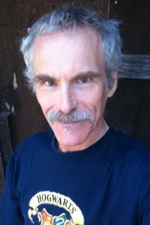 |
Ed Kellogg, Ph.D. (USA)
earned his Ph.D. in biochemistry at Duke University, and
has published numerous papers on his work in fields as
diverse as the biochemistry of aging, bioelectricity,
general semantics, lucid dreaming, voluntary controls,
and the phenomenology of consciousness. From
2002-2005--with a lot of help!--he created, organized,
and hosted IASD's first four online PsiberDreaming
Conferences.
Lucid Dreaming, Lucid Waking, Lucid Being (workshop)
"Individuation" (in a Jungian sense) refers to a type of
psychic growth, through which the fragmented self
becomes more and more whole through a process of
integration.
Lucid dreaming also involves a kind of
"individuation" in that, for the lucid dreamer, two
disparate "selves," the waking self and the dream self
integrate to some extent into an expanded "lucid
dreaming self." In lucid dreaming the waking self
dormant during ordinary dreaming, becomes activated and
integrated with the dreaming self. In a similar
way, in
lucid waking, the dreaming self becomes activated
and integrated with the waking self in waking life,
making available an enhanced sense of Beingness, as well
as abilities not available to the waking self normally.
As in lucid dreaming, in the beginning stages this state
of consciousness often proves unstable, both as to
duration as well as to the degree of integration
achieved.
A "lucid waker" will experience both the physical and
dreaming worlds simultaneously to some degree. As
the dreaming world seems predominantly a world of
meaning, this overlay will also result in experiencing
more--or at least meaningfully intending more--with
regard to what comes through the physical senses.
In theory, effective healers and people who demonstrate
high functioning psi, in the waking state must to some
extent experience lucid waking in order to do what they
do, either in healing or perceiving psi information.
When healers see auras, they may well do so by looking
at the world through their "dream eyes" as well as
through their physical eyes. Waking precognitive
or remote viewing visions may provide useful
information. This workshop will explore methods
for enhancing Lucid Beingness in both waking and dream
states.
|
| |
|
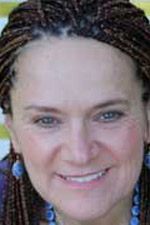 |
Jacquie Lewis, Ph.D. (USA)
is an educator, researcher, and author on dreams who
offers dream lectures and workshops focusing on personal
insight, transformation, and spiritual growth. She
has appeared on radio and TV, has lectured at
educational conferences, and has conducted dream
workshops at Infinity Foundation in Highland Park, IL.
Jacquie holds a Ph.D. in Psychotherapy with an emphasis
on consciousness and spirituality. She teaches
Dream Analysis at California Southern University and is
the Co-Director of the Dream Studies Program at Saybrook
University. She also incorporates dreamwork into
her graduate courses at the Chicago School of
Professional Psychology.
Jacquie is
IASD Dream News editor and secretary of the
Board of Directors of IASD. She is currently
co-editing a book on dreams and education
www.lotusdream.org
There's Something Happening Here: Dreaming a
Presence (paper)
People have reported having psi experiences in waking
where they feel a presence around them. Usually
when one has had such and experience it is difficult to
forget. While some people feel uncomfortable
believing that deceased Aunt Martha came for a visit;
others accept the experience as a direct communication.
As the Buffalo Springfield song from the 1970's says,
"there's something happening here." What are these
experiences and do they also occur during dreaming?
Have you ever had a dream where you feel a dream
character's presence, but you don't actually see the
individual in your dream? What do we make of such
dreams?
This dreamer will share three such dreams she had, one
involving a non-human and two involving a childhood
influence and a woman in her dream group. Perhaps
the most interesting experience is what happened after
these dreams and how the dreamer began to understand
their power. Readers are invited to share their
own similar experiences.
|
| |
|
 |
Mary Pat Lynch, Ph.D. (USA)
is a writer who lost a career in
medical education due to illness, and began a journey
that included shamanic practice, dreamwork, and
astrology. She now actively explores the interface
between these and other intuitive languages.
"Dreaming is a rich journey all its own," Mary Pat says,
"one I've shared with the PsiberDreaming community.
I'm proud to be part of this amazing group of dreamers."
www.risingmoonastrology.blogspot.com
The Astrology of Lucid Dreaming (workshop)
We live in amazing times, when it sometimes feels as if
the ground beneath our feet is shifting. The
magnitude of change is reflected in sky patterns.
Lucid dreaming is one way our consciousness can expand,
and is expanding, making this an intriguing time to look
at astrology and lucid dreaming together. The
current issue of
The Mountain Astrologer, the premiere
astrological journal, mentions lucid dreaming (and the
movie
Inception) as an example of our expanding
ways of experiencing the world.
This workshop explores how lucid dreaming as a cultural
phenomenon as well as an individual practice, is
reflected in astrological charts. During the discussion,
we will share experiences with lucid dreaming and
discuss how astrology, in the sky now and in our birth
charts, relates to our dreaming.
|
| |
|
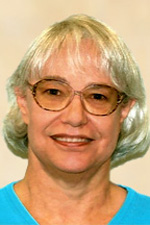 |
Linda Lane Magallón,
MBA
(USA)
has constructed collage imagery for shared dreaming
projects, dream telepathy contests and dream journal
presentations. These creations are based on her
vision board experience as a career counselor and
women's reentry workshop leader. Linda also
produced the graphics for her book,
Mutual Dreaming, the realization of more
than two decades of field research while coordinator of
the Fly-By-Night Club, Bay Area Dreamworkers Group, and
Seth Dream Network. Illustrations, dreams,
articles, and presentations can be found on her web site
dreamflyer.net
www.dreamflyer.net
Vision Boards for Sleeping Dreams (workshop)
Although vision boards have been popularized as a
graphical means to achieve waking hopes and dreams, they
are quite fitted for the fulfillment of your sleeping
wishes. You can choose to create your own board on
or offline. Here's help to incubate the dream of
your desires, for psiberconference play, for personal
growth, or for group brainstorming...in the dream state,
of course.
|
| |
|
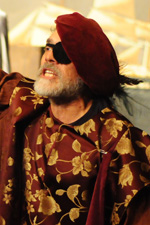 |
Al Moniz (USA)
At one time, Al Moniz (aka almo) was a freelance comic
book script writer for Disney Studios and Western
Publishing (aka Gold Key Comics). But all that
ended with an unscrupulous editor and Al became just
another worm spit out by the Big Apple. Time
passed, his comic writing days a distant dream, when in
2006 Al took a workshop in Carlos Castaneda's Tensegrity.
There a realization that he always wanted to DRAW his
stories (not just script them) was awakened along with a
latent ability to occasionally lucid dream. Out of
that odd coupling came
The Far In Adventures of Kid Lucid
(tm) Being published in
The Lucid Dream Exchange for a year or so
led to a monthly gag cartoon in the
IASD Dream News and the rest as they say was
history (or at least HIS story!)
The Secret Life of Kid Lucid
Everything you wanted to know about Kid Lucid and Dream
Thyme Toons, but hadn't bothered to think to ask because
you had many more useful things to do with your time.
(or maybe you never heard of him????)
|
| |
|
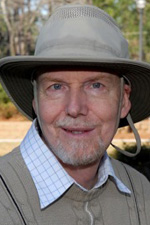 |
Paul Overman, Ph.D. (USA)
Dream Psychologist and Sound-Consciousness Researcher
Paul Overman, a psychologist, consciousness researcher
and author, specializes in shamanic-yogic dreaming
theory and principles. Paul's e-book,
The Shamanic Dream will be available in the
fall, with several key excerpts and exercises included
in this presentation. Initiated into "dreaming"
since his youth, Paul Overman holds a Ph.D. from the
California Institute of Integral Studies in San
Francisco. He is a trained yogic meditator of
thirty years.
The Shamanic Dream, Multi-Level States of Dreaming and
Lucidity (paper)
This program presents basic principles and techniques of
the concept of the Vedic-Shamanic dream--with reference
to ancient texts and modern Eastern authorities.
The focus is on developing dream lucidity at
progressively higher levels of consciousness for more
spontaneous and empowered lucid-creative dreaming.
Paul's dreaming tradition recognizes multiple levels of
lucid dreaming based on ancient Vedic discoveries of the
seers, framed within current-collective evolution and
the need for transformation of consciousness.
In the ancient Vedic science of meditation and dreaming
there are recognized four major "bodies of
consciousness": waking; subtle-dream; causal-soul; and
supra-causal, the Self. It also recognizes higher
and lower states or levels of dreaming--subconscious and
supra-conscious. The supra-conscious levels of
lucid dreaming are most desirable from a Vedic and
yogic-shamanic perspective for true personal empowerment
and collective transformation. Principles, basic
techniques, and several exercises will be presented to
facilitate higher-lucid, spontaneous-creative dream
states.
|
| |
|
 |
Sherry Puricelli, MHA, M.Div., Modern Day Mystic
(USA)
Sherry is a Life Coach, specializing in Dreams. A spiritual seeker
by nature, she integrates dreams, synchronicities,
contemplation, and ceremony into a seamless lifestyle.
Sherry’s current endeavor with partner, Brenda Ferrimani,
is to create a dreaming community complemented by
mystical traditions such as astrology, tarot, and
Qabalah:
http://dreamingglobalillumination.com/
Rita Dwyer (USA) IASD Past President
(1992-1993) and Executive Officer (1993-1999)
Rita, a former rocket scientist whose life was saved by
a coworker's dreams, has participated in all earlier
PDCs as part of the PsiberDream Team. One year, she was
surprised to win a Triple Crown Award by scoring in
three of our psi contests! She believes we all have
innate abilities to do that and has spent decades
promoting the value of psi dreams. Her current focus is
on after-death communications (ADCs) as proof of the
existence or survival of soul/consciousness.
Brenda Ferrimani (USA) is a visionary artist
inspired by dreams. Certified for dream work by the
Marin Institute of California, a member of IASD since
2001, she was honored with the Nancy Richter Brzeski Art
Award for her painting "Fall
into Fear."
Her articles and artwork are regularly featured in Dream
Network and Dream Time magazines. She currently co-hosts
a blog site with Sherry Puricelli, Dreaming Global
Illumination.com
Laura Atkinson (USA) is a photographer from
Rhode Island who has explored the links between
creativity, visual arts, and the realities of the
dream/awake state for many years. She "focuses" on dream
art, psychic elements of dreaming, and has a special
interest in mutual/meshing dreams.
Deborah
Coupey, M.A. (USA)
Dream Work Practitioner, Dream Research and
Writer.
Founder of: “ The Art of Dreaming”.
I.A.S.D.
Membership Contact for
California
and
France.
Co-host for 2012 Berkeley I.A.S.D. Conference.
Her interest in
dreams began with a recurring, relentless visitation
dream from her paternal grandmother.
This led her to research visitation dreams.
In 2010- as a
pilgrim on a path she studied the dream healing
practices of the Asklepian dream temples and Oracles of
the Dead in Eleussis, Ammoudia, Dodonna and Delphi. On this
pilgrimage Dr. Raymond Moody unveiled his new research
on S.D.E.’s or shared death experiences. She is
fascinated with sacred sites, and the transformative and
mystical experiences that transpire.
The Spirit of the Abbey (panel presentation)
Dreams brought many of us together for the IASD
conference in the Netherlands. There was music with
dancing in the courtyard of the 12th century Rolduc
Abbey, a phenomenal art exhibition, new friendships
being forged and others rekindled--all highlighted, of
course, by numerous workshops and Keynoters to pique
various interests.
The spirit of dreaming brought us together, but for
some, the spirit of the Abbey brought more. There are
multiple stories of mysterious happenings such as a
picture crashing to the ground at just the right moment
during a presentation, a smokey looking image of a face
(or faces) peering back from a camera screen, a message
of a friend's journey from the physical body into the
spiritual dimension, and other mystical dream-like
experiences.
We will be sharing some of the personal stories here and
you're invited to share your experience too. Do you have
a story to tell? Join us....
|
| |
|
 |
Line Salvesen (Norway)
is a lucid dreamer with 20 years experience in lucid
dreaming. She averages five lucid dreams a night
and is active in online lucid dreaming communities and
with researchers. Line also promotes lucid
dreaming in Norway, where she has been in the media
several times.
Growing Up As A Lucid Dreamer (paper)
For children, just like adults, it can be frustrating to
be interested in dreams. Strange looks and
comments such as "it's just a dream" are common and
might cause dreamers, no matter the age, to keep their
experiences to themselves. Adults have the
resources to seek out like minded in groups and
associations such as IASD. Kids, however, do not.
For them, it is much easier to give up and stop paying
attention to their dreams. The same goes for
children who are lucid dreamers, which is probably a lot
more common than we think. The gift of lucid
dreaming can easily be lost as the child joins the
adults in claiming "it's just a dream."
Thankfully, not all lucid dreamers get this during their
childhoods. I should know, as I was one of them.
This is my story.
|
|
|
|
 |
Gregory Scott Sparrow, Ed.D. (USA)
is an Associate Professor at the University of Texas-Pan
American. In 1974, Scott wrote a master's thesis
on lucid dreaming, and in 1976 expanded his thesis to a
small book titled
Lucid Dreaming: Dawning of the Clear Light.
In 1983, he conducted a dissertation study on lucid
dream induction, and has since focused on lucid dreaming
as spiritual practice and therapeutic modality.
Resolving Conflicting Paradigms That Have Influenced the
Field of Lucid Dreaming
One of the great questions that has arisen in the lucid
dream research community has bee, "What is the ideal
stance that one should maintain in regard to the dream
imagery?" From one standpoint, the imagery is
presumably a self-creation, and thus subject to the will
of the dreamer. But in the actual encounter, the
imagery often asserts its own autonomous agenda.
To the extent that one regards the autonomous
manifestation of the dream imagery as meaningful, then
perhaps it is incumbent upon the lucid dreamer to
establish a relationship with it in hopes of learning
from it, and perhaps becoming more fully integrated with
it. But, on the other hand, such engagement
potentially threatens the continuation of lucidity and
the constructive disengagement from the chaotic forms
and energies of the dream. This dilemma reflects
the age-old dialectic that expresses itself in various
religions and spiritual traditions, in which two paths
have clearly arisen: one leading to transcendence from
the world of form, and one leading to the acceptance and
utilization of the forms of creation, as well as the
energies which empower those forms. The first path
is associated with various spiritual philosophies, such
as Vedanta and Hinayana Buddhism. The downside of
this path is in its extreme form, a devaluation of the
phenomenal world and, ultimately, a kind of solipsism
that denies its independent reality. The second
path is associated with alchemy in the West, and
Mahayana's tantric yoga in the East, in which the
transformation of "lower" forms and energies is
considered the ideal approach. From this
standpoint the Mahayana doctrine of nonduality holds
that
nrivana and
samsara are two aspects of the same whole,
and thus equally valuable. Hence from this
perspective, the form of the dream offers a relationship
that leads to the transformation and harnessing of its
energies. The downside of this path can be the
destabilization of the self and a loss of perspective
through engagement with the world of form.
In my presentation I will draw upon a series of dreams
in order to illustrate that when dreamers adopt one of
these classic positions or the other, the autonomous
aspects of the dream seem to compensate for the
dreamer's stance, thus intimating the need for synthesis
of these divergent philosophical and psychological
perspectives.
|
|
|
|
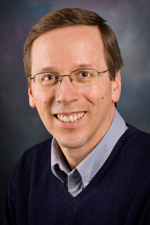 |
Robert Waggoner (USA)
Author of the popular book
Lucid Dreaming: Gateway to the Inner Self,
Robert Waggoner is past President of the International
Association for the Study of Dreams and co-editor of the
quarterly online magazine
The Lucid Dream Exchange. A lucid
dreamer since 1975, he has logged approximately 1,000
lucid dreams.
Scattering the Seeds of Lucidity (in the Field of
Dreams) (workshop)
As lucid dreams begin to flower in your mind, they drop
idea-seeds in the garden of your awareness. With
practice, you notice how these idea-seeds can be
recognized and cultivated to enhance your
waking-dreaming-and-lucid life. In this workshop,
we will comb through the harvest of dreams, lucid
dreams, and waking experiences to collect vital
idea-seeds that you can scatter in the fields of your
mind for a more bountiful, fulfilling, and illuminating
life.
|
| |
|
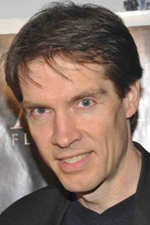 |
Craig Webb (Canada),
Director of the Dreams Foundation
is a physicist and dream and consciousness
researcher/author/inventor who was involved with
pioneering lucid dream research at Stanford University,
and later research at Montreal's Sacré-Coeur
Hospital. Join Craig's upcoming dream mastery and
lucid dreaming teleclasses at
www.dreams.ca/teleclass.pdf
Lucid Living in This Waking Dream (paper)
Life is but a dream
says a familiar childhood tune. We who have been
interested in dreams and consciousness exploration for a
while have likely seen or heard the idea often.
Yet how much do we actually consider it more than an
intriguing though, without much context, as we row our
boat sometimes gently, sometimes not, down life's
stream? The true perspective hinted at can be
elusive, yet I believe it's also of great value to
enhance fun and fulfillment in life. To unlock its
potential requires a specific conceptual tool that can
expand and view the idea clearly, in context, and focus
it in a particular way. Lucid dreaming is just
such a tool, and a series of real-life examples are
shared that elucidate how Life truly can be likened to a
dream and why it might be worthwhile.
|
| |
|
|
|

